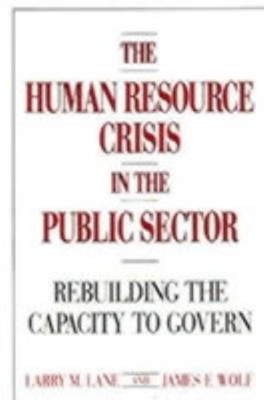The Human Resource Crisis in the Public Sector(English, Hardcover, Lane Larry)
Quick Overview
Product Price Comparison
This volume focuses on what many see as an iminent crisis in the public sector, and particularly in the federal government-the possibility that, due to the realities of workforce demographics, poor leadership, lack of competitiveness in the labor market, and demotivating worker conditions, the public service will not maintain its capacity to manage programs, execute laws, and effectively deliver services for the American people. Larry Lane and James Wolf examine the significant human resource problems now confronting federal agencies, addressing these issues from a demographic, organizational, political, and cultural perspective. Arguing that the revitalization of the public service demands an effective, responsible, energetic, and committed workforce, they recommend concrete solutions and strategies aimed at stabilizing the current situation and contributing to a stronger and more effective public service over the long term. Following an introductory statement of major issues, Lane and Wolf explore the crucial roles of the public service in a democratic system of governance and assess the factors that now put the system at risk. They then introduce four conceptual lenses that can be used as an analytical tool to understand the problems of the public service and to develop solutions for assuring the supply, preparedness, productivity, and dedication of government employees. The authors first look at employment flow-the problem of maintaining workforce cadres over time. They examine problems of attraction and retention, inadequacies in system personnel policies, and the necessity for workforce planning. Turning to a discussion of competence in the workforce, the authors examine systemic blocks to the development of competence and offer strategies for addressing the competence issue. The next two chapters treat the concepts of energy and commitment, exploring ways to foster an organizational culture that encourages productivity, continuous improvement, and a long-term commitment to public service. The final chapter presents a detailed set of proposals, options, and initiatives for rebuilding the public service. Administrators, policy-makers, personnel officers, and students of public administration will find this work a significant contribution toward understanding and resolving the public sector's intensifying human resource problems.


